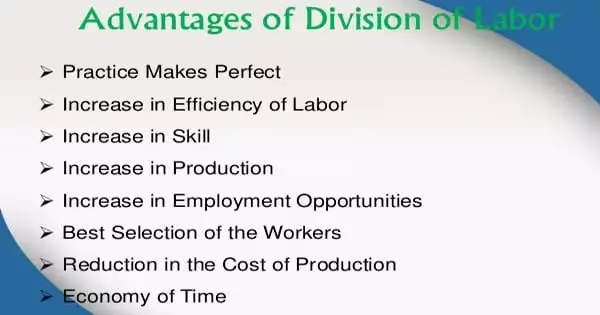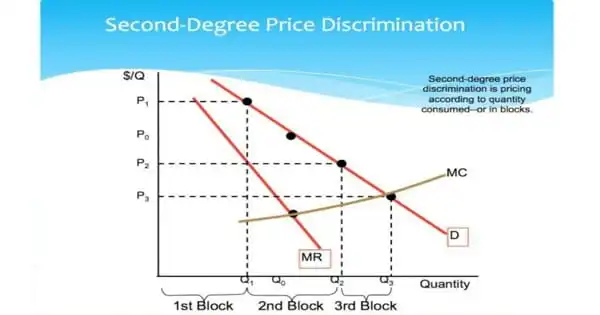Labor division has spread throughout the developed world. This is seen in the majority of consumer products today. The iPhone, for example, requires components such as its shell, battery, screen, and logic board. Not all of these are produced by Apple, let alone by the same individual. Separate firms with greater specialties are required by the firm. Firms in Japan will make the camera, German firms will make the accelerometer, the US will make the audio chip, and China will make the battery and assemble it.
The division of labor has several advantages, which is why it has become commonplace. So, let’s take a look at them:
(1) Efficient Mastery
Mastery of a skill takes significantly longer without the division of labor. This is due to a worker’s attention being divided among several tasks. For example, it would be impossible to master a language while concurrently learning the piano, engineering, CSS, and economics. As a result, the division of labor allows the worker to concentrate on and master a single aspect of the process, allowing them to learn it faster.
When a company hires a new employee, it is significantly easier to train them if they can concentrate on a single task. For example, an employee at a car production plant would be more efficient if they concentrated on fitting the wheels rather than the doors, steering wheel, and so on.
(2) Quicker Training
Some industries have a higher rate of turnover than others. Because of the division of labor, new employees may quickly replace lost workers. Instead of taking a year to become proficient in a role, it may only take three months. This lessens the impact of a worker’s departure. A worker who has learned how to create a pin from start to finish, for example, carries their skills and knowledge with them. It will take months, if not years, of training and experience to replace that person.
If a worker who creates the pin’s head leaves, an incoming employee has significantly less to learn and master. To put it another way; it is more efficient to replace a piece of the puzzle than the entire puzzle.
(3) Productivity
When employees concentrate completely on a single task, they may complete it more quickly and efficiently. Workers become more productive as a result. Workers’ attentions are not diverted by allowing them to focus solely on one task. Returning to Smith’s pin factory, the division of labor improved output from one pin per worker per day to nearly 4,800 pins per person per day.
Increased productivity is attributable in part to a higher level of skill. It is, however, a byproduct of various other benefits. For example, it enables workers to flow to places where they are most effective. Some personnel may excel at dealing with and manipulating data, while others excel at managing people and projects.
(4) Efficient Allocation of Workers
When we talk about worker allocation, we’re referring to their function in the manufacturing process. For example, a one-stage procedure could become a five-stage process. This results in five distinct and distinct jobs, each with a distinct task.
Large organizations, for example, have departments for finance, information technology, human resources, and marketing, among others. Employees can specialize thanks to the division of labor. This is efficient because folks who are well-suited to an IT function may not be well-suited to the role of a human resource. There are some abilities that do not necessarily transfer well to specific tasks. So rather than be a jack of all trades and master on none; division of labor allows the employee to be a master.
(5) Cheaper Products
Because the division of labor enhances productivity, it also reduces the cost of producing a good. As a result, items become more affordable. When labor is divided among five persons who specialize in their respective tasks, it becomes faster and more efficient. As a result, the number of things produced rises. For example, it is significantly more difficult for a McDonald’s server to serve customers, prepare the burgers, and fry the fries than it is to simply serve the client. As a result, when the server concentrates on the customer, it results in better customer service and a more efficient procedure.
(6) Higher Wages
It is important to note that not all productivity improvements are necessarily passed on to the customer. Profits may receive a share of the funds, while others may be used to increase employee pay. Employees may often regard this as a way to mitigate the unfavorable consequences. Some employees, for example, may get demotivated and bored by the repetitious features of the job. Higher wages can assist to mitigate the effect, although they may not totally remove it.
This is what Henry Ford accomplished in the early twentieth century when he established the Ford assembly line. Despite the fact that workers were assigned to particular and repetitive tasks, they were paid more than the industry average. The turnover rate decreased, and employees got happier as a result.
(7) Innovation
When employees are assigned certain responsibilities, that is all they can think about. As a result, flaws in the current method become more visible. It is easy to see opportunities for development when you perform the same work every day. It consumes more processing capacity in the brain, so it is at the forefront of a worker’s consciousness.
















